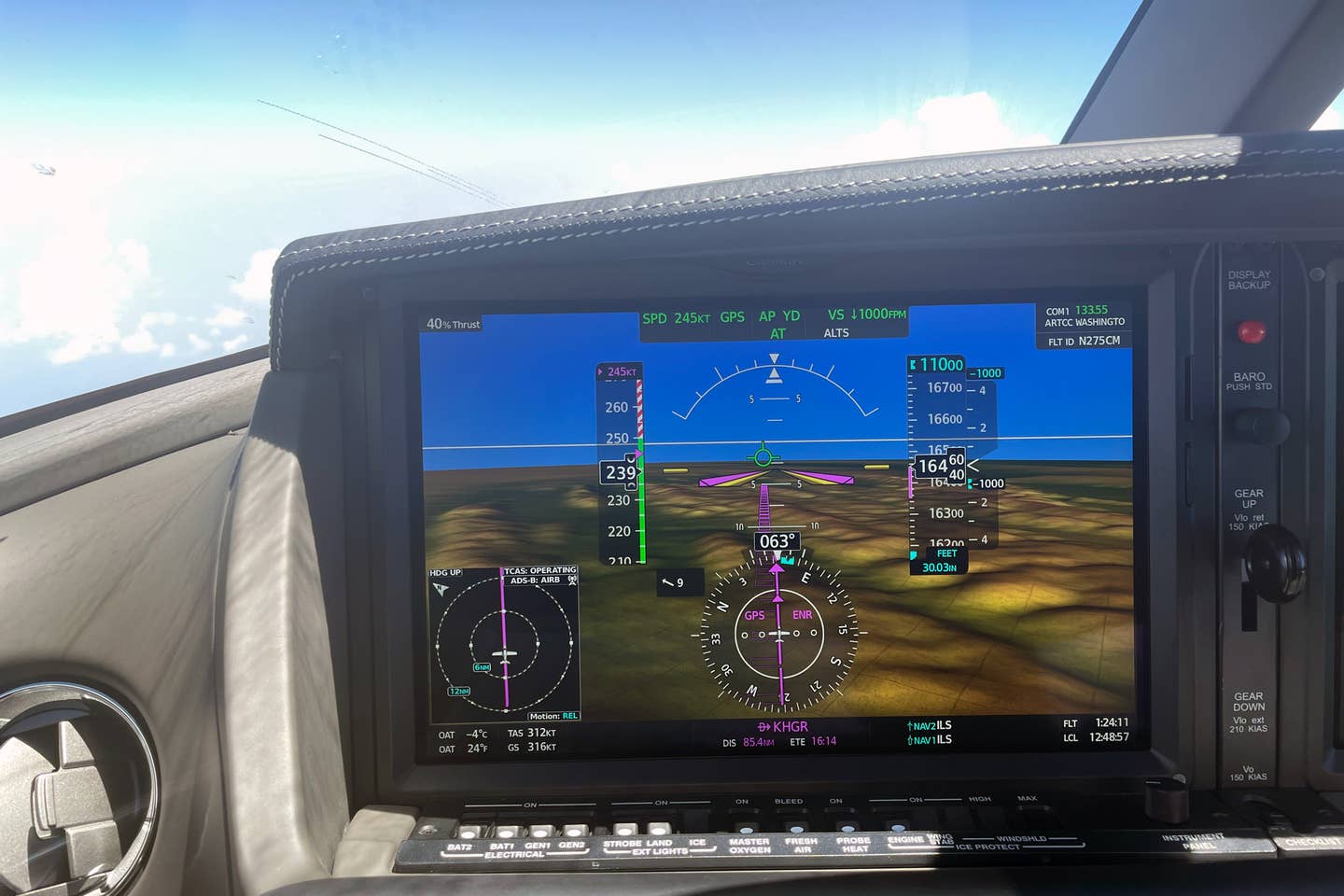
We had the chance to test out the new performance promised by the Vision Jet G2+ as well as the onboard Wi-Fi. Julie Boatman
Cirrus Aircraft has updated the SF50 Vision Jet, which it announced on July 20, ahead of EAA AirVenture in Oshkosh, Wisconsin. The latest version, the Vision Jet G2+, hits a key area of improvement: hot-and-high airport takeoff and landing performance. Also included in the upgraded model: Gogo’s Avance L3 in-flight Wi-Fi.
Performance gains during high-density-altitude airport operations came from collaboration with Williams International on the jet’s FJ33-5A powerplant. Though it’s still rated at 1,846 pounds of thrust, more of that will be available because of an adjustment to temperature limitations. The company estimates that pilots will see an improvement in takeoff and landing performance of roughly 4 percent at sea level, under ISA conditions, and a reduction of up to 20 percent in takeoff and landing distances on high-altitude runways such as that at Telluride Regional Airport in Colorado. We saw that improvement bear out during our initial flight test in the aircraft still under market survey in early July.
“The G2+ Vision Jet is the next step in continuing to transform personal aviation,” said Zean Nielsen, CEO of Cirrus Aircraft. “The enhancements to both the take-off performance capabilities in hot and high conditions and the InFlight WiFi connected passenger experience ensure that the Vision Jet continues to exceed the evolving needs of our owners, both present and future.”
The new onboard Wi-Fi delivers 3G speeds through the Gogo Avance L3 network, and the system clicks on as low as passing through 3,000 feet agl, depending on the terrain, available towers and other factors. The Vision Jet is the first “personal jet” to bring Gogo’s connectivity onboard. “The need and desire to be connected in flight is not bound by aircraft size or aircraft mission—everyone who flies in their own aircraft deserves to have fast, reliable connectivity,” said Mark Sander, vice president of OEM sales for Gogo. “The Avance L3 is clearly the best solution for personal jet owners and operators who want, fast, reliable inflight connectivity on the most reliable network for aviation.”
Cirrus has also been at work on other details, including improved dispatch reliability in order to serve a new market segment: Part 135 operations. The company has refined the minimum equipment list and made strides in parts availability to head off extended airplane-on-ground issues. The fully loaded new model starts at $2.98 million, with the Avance L3 option included in that price. Look for a full “We Fly” report in an upcoming issue of Flying.

Sign-up for newsletters & special offers!
Get the latest FLYING stories & special offers delivered directly to your inbox






